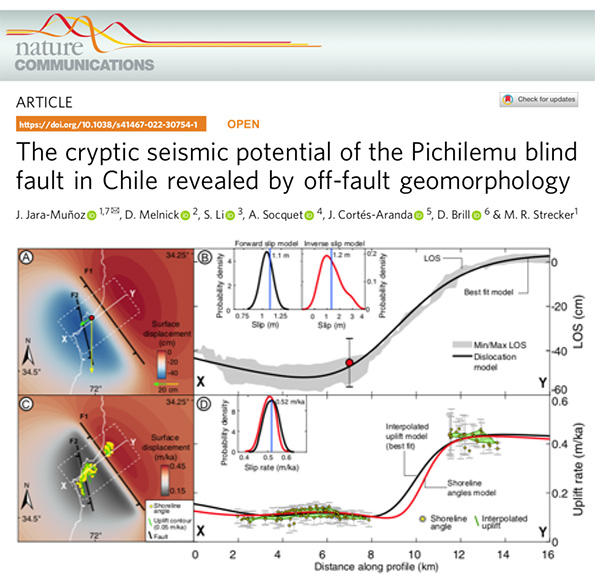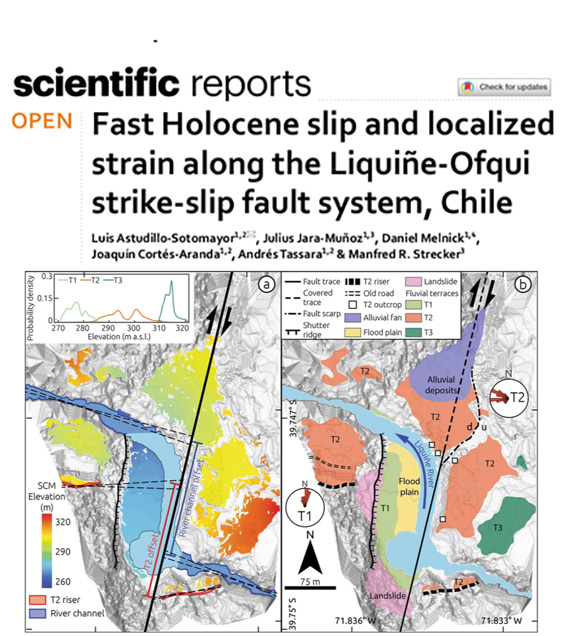The cryptic seismic potential of the Pichilemu blind fault in Chile revealed by off-fault geomorphology
Friday 19 August 2022 kl. 19:24
Since decades, cryptic faults have concerned earthquake scientists because of their unexpected presence. Unlike typical faults, cryptic faults pose a hidden seismic potential that is hard to identify before they produce an earthquake. The recent rupture of previously unknown faults such as the 2019 Ridgecrest in California, 2016 Papatea fault in New Zealand and several others highlight the high potential of cryptic fault to produce damaging earthquakes as well as a current gap in our understanding of cryptic faults. Here we developed a novel approach to detect these hidden faults and estimate their seismic potential by studying off-fault deformed geomorphic markers such as marine terraces using TerraceM and 1-metre resolution LiDAR topography, optical dating of sediments and space geodetic observations. We further used the TerraceM dislocation model to estimate the fault slip rate and their seismic potential.

The approach proposed in this study opens new opportunities for the development of more accurate active-fault maps and hazard assessments, with far-reaching implications for seismic risk management in coastal areas.


